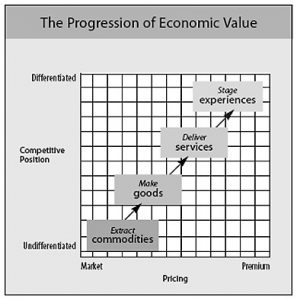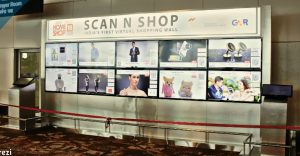Rise of Experiential Marketing in India
Confucius, the great Chinese teacher and philosopher once quoted “I hear and I forget, I see and I remember, I do and I understand”. Further, a fair extension to this quote could be “I experience and I believe”. This is true in general sense. We as human beings experience a variety of things, emotions, which form our basis of thinking and analysing situations as well as shape our ability to interact with people. Well, triggering consumer’s emotions is the crux of any marketing campaign (traditionally done through print and now through digital media), which has gradually evolved into sharing emotions through influence and experience. How? Let’s find it out.
I recall one of the TED Talk by Joseph Pine*, which talks about creating authentic consumer experiences and how the whole economy has progressed from commodities to goods to services to experiences.
With commoditization of good and services, and rise of new age informed consumer, it is very difficult to garner attention with traditional marketing practices. Digital marketing has expanded the reach and shortened the purchase cycle (buy on the click), it has created a large pool of data that can be analysed to understand consumer behaviour to come up with targeted marketing plans. Nevertheless, digital marketing has created a more powerful consumer that can tarnish a brands image with a tweet going viral, thus making it more vulnerable for companies to sustain brand loyalties.
Experiential marketing is a concept adopted by marketers across the world and one such industry that is extensively selling experience is the ‘Hospitality’ business. Travel by a flight or stay in a 5 star hotel, all that you will take away is experience. Your word of mouth about a particular hotel or flight can make or break its brand. I recall an example from the stories of Taj hotel. A child forgot his teddy at the restaurant after their visit at the hotel. The hotel staff sent the pictures of toy to the child’s father along with a message that “your child’s teddy is surely missing him, but we are making it feel home”. Similarly, be it banking at ICICI or having a cup of coffee at Starbucks, all that you are doing is experiencing. Interestingly, Starbucks has no ads, nor any branding strategies. In fact, they are a brand that sells experience. Their message is simple, “The coffee beans are same, the brewing process is the same, the packaging is same, and the only thing that is different is the experience of having a coffee at Starbucks.
Some of the most famous and pioneers of Experiential marketing in India are from HomeShop18 who came up with a virtual wall at India’s Capital, Delhi International Airport that guided people to scan QR codes on mobile phones to download their app and enable quick and smart shopping.
Pepsi India came up with ‘Pepsimojis’ vending machines (campaign name – Jaisa Mood Waisi Pepsi) that offered consumers free Pepsi cans after they performed an act requested by the vending machine (e.g. dance for a minute, shout I love Pepsi and so on). This machine was installed at a college campus and the video of which went viral on social media.
Such interactions with the brand gives them memorable experiences and make them a story to tell. Cadbury tied up with Kidzania to arrange kid’s visit to their chocolate plant giving them an experience the view the chocolate making process. One of the way to make consumers experience great is selling the idea of TIME. Companies like Nestle Maggi (ready in 2 mins.) and Dominoes (delivery in 30 mins. or else free) who guaranteed consumers the time to serve, which created an impact that consumers experienced. Today, Maggi is synonymous to 2 minutes or quick hot food and guess what, people have experienced it. Such marketing strategies doesn’t just sail through, it anchors in peoples mind, making it their own brand.
In Experiential marketing, one of the motivation factors from the consumer standpoint are the freebies that one gets along as a giveaway. In fact, a survey on Experiential marketing by EventTrack found that 81% people are attracted by a free sample or other giveaway, 54% for discounts, and 49% to learn about product or service. Once I was reading a newspaper and recall getting a tea sachet (attached in newspaper as a sample), eventually tried the tea and liked it, which otherwise I would have not gone away from my old tea brand.
With the vast explosion of information in the digital age, one thing is clear that the gone are the days of traditional marketing. Today’s consumer doesn’t even hesitate to browse through couple of aps, check for promo codes and then buy. In fact, they will be more open to something real that can be touched, felt and experienced, rather than adding and deleting items in carts out of scepticism.
References:
TED Talk by Joseph Pine – What Consumers Want
*Joseph Pine is writer and veteran marketing consultant to entrepreneurs, Images: Internet.




